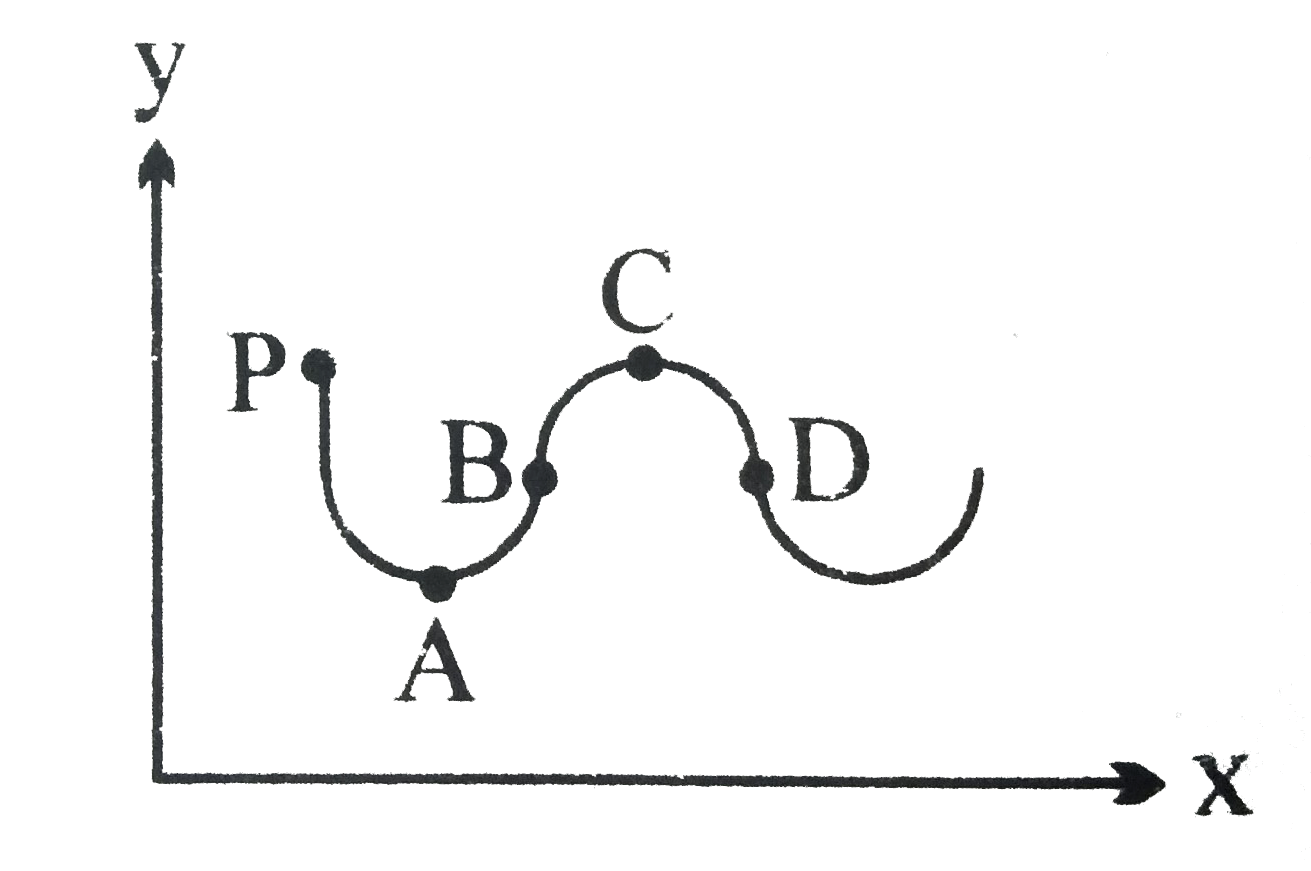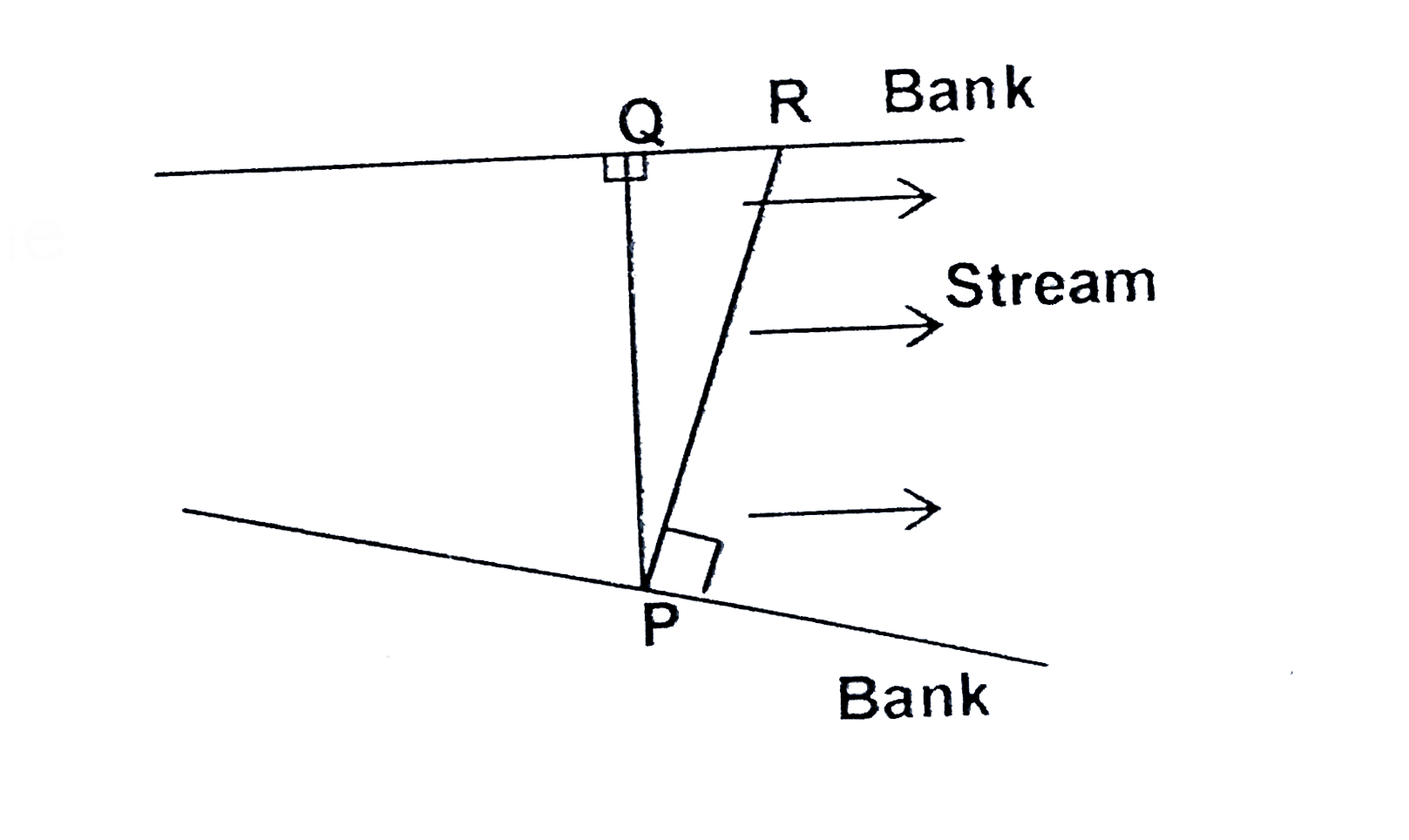A man moves in x−y plane along the path shown. At what points is his average velocity vector in the sam direction as his instantaneous velocity vector. The man starts from point P.
 Solution in Gujrati
Solution in Gujrati
A
B
C
D
The correct Answer is:C
When the secant from P to that point becomes the tangent at the point
Topper's Solved these Questions
- KINEMATICSBOOK - ALLEN CHAPTER - KINEMATICSEXERCISE - EXERCISE-02
57 Videos
- KINEMATICSBOOK - ALLEN CHAPTER - KINEMATICSEXERCISE - EXERCISE-03
6 Videos
- KINEMATICSBOOK - ALLEN CHAPTER - KINEMATICSEXERCISE - EXERCISE-2
89 Videos
- ERROR AND MEASUREMENTBOOK - ALLEN CHAPTER - ERROR AND MEASUREMENTEXERCISE - Part-2(Exercise-2)(B)
22 Videos
- KINEMATICS (MOTION ALONG A STRAIGHT LINE AND MOTION IN A PLANE)BOOK - ALLEN CHAPTER - KINEMATICS (MOTION ALONG A STRAIGHT LINE AND MOTION IN A PLANE)EXERCISE - BEGINNER S BOX-7
8 Videos
Similar Questions
A particle is moving in a plane with velocity given by →u=u0ˆi+(aωcosωt)ˆj, where ˆi and ˆj are unit vectors along x and y axes respectively. If particle is at the origin at t=0. Calculate the trajectory of the particle :-
View SolutionThe equation of one dimensional motion of the particle is described in column I. At t=0, particle is at origin and at rest. Match the column I with the statement in Column II.
Column IColumn II(A)x=(3t2+2)m(p)Velocity of particle at t=1s is 8m/s(B)v=8tm/s(q)Particle moves with uniform acceleration(C)a=16t(r)Particle moves with variable acceleration(D)v=6t−3t2(s)Particle will change its direction some time
View SolutionA student performs an experiment to determine how the range of a ball depends on the velocity with which it is projected. The "range" is the distance between the points where the ball lends and from where it was projected, assuming it lands at the same height from which it was projected. It each trial, the student uses the same baseball, and launches it at the same angle. Table shows the experimental results.
∣∣ ∣ ∣ ∣ ∣ ∣∣TrailLaunch speed(m/s)Range(m)110822031.833070.7440122.5∣∣ ∣ ∣ ∣ ∣ ∣∣
Based on this data, the student then hypothesizes that the range, R, depends on the initial speed v0 according to the following equation : R=Cvn0, where C is a constant and n is another constant.
Based on this data, the best guess for the value of n is :-
View SolutionA cube has a side of length 1.2×10−2m. Calculate its volume.
View SolutionA football player kicks a ball at an angle of 30∘ with an initial speed of 20 m/s. Assuming that the ball travels in a vertical plane, calculate (a) the time at which the ball reaches the highest point (b) the maximum height reached (c) the horizontal range of the ball (d) the time for which the ball is in the air, (g=10m/s2)
View SolutionAssertion: The instantaneous velocity does not depend on instantaneous position vector.
Reason: The instantaneous velocity and average velocity of a particle are always same.
View SolutionIn a lake, stream direction is as shown in the figure. A man starting from the point P on the bank wants to move to the

View SolutionA particle moves in x-y plane, starting from A along straight line path AB and BC as shown in the graph. When it is at point P angle between diections of its average velocity and instantaneous velocity is [tan37^(@)=3//4]
View Solutionएक कण एकसमान चाल से वृतीय पथ पर चलता है| तात्कालिक वेग वेक्टर तथा त्वरण वेक्टर के बीच कोण _________होगा|
View Solutionनियत चाल से वृत्तीय पथ में गति कर रहे कण के तात्क्षणिक वेग और तात्क्षणिक त्वरण की सदिश स्थिति क्या होती है?
View SolutionA lamp post is fixed at point(0,0,5m). A man is moving with constant velocity 6 m/s along a line y=√3x. Height of man is 2m and initially the man is at origin. The velocity of edge of his shadow along the line of motion of man is
View SolutionA man moves along the path abode as shown in the Fig. What is his displacement from the point of start?
View SolutionThe position vector of a particle at two points along its path is given along with the time taken to move from one point to other . Can we determine particle's instantaneous velocity and its average velocity using this data? Explain.
View Solution(A):The Instantaneous velocity does not depend on instantaneous position vector.
(R ):The instantaneous velocity and average velocity of a particle are always same.
View SolutionIf a man moves towards a stationary plane mirror with a velocity of 15m / s, the velocity of his image will be relative to the mirror -
View SolutionA particle starts from a point A and travels along the solid curve shown in figure. Find approximately the position B of the particle such that the average velocity between the positions A and B has the same direction as the instantaneous velocity at B.

View Solution
